A recent study published in Journal of Neuroscience on Dec. 9, 2020, reveals a novel role of fibroblast growth factor (FGF)13 in mediating itch sensation via the interaction with NaV1.7 in the peripheral nervous system. This work was performed by researchers in Dr. ZHANG Xu’s Lab and in Dr. BAO Lan’s Lab.
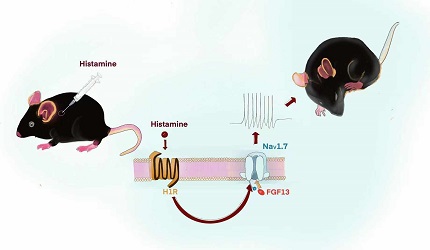
A recent study published in PNAS demonstrated that the orbitofrontal cortex (OFC) and the dorsal lateral prefrontal cortex (DLPFC) contribute differently in value-based decision making. This work was performed by researchers in Dr. YANG Tianming’s Lab. The findings of the distinct response patterns of the OFC and the DLPFC indicate how they may work together to compute the value in decision makings.

Professor Logothetis is the incoming Co-Director of International Center of Primate Brain Research, Institute of Neuroscience, Center for Excellence in Brain Science and Intelligence Technology of the Chinese Academy of Sciences. In the study, published in the recent issue ofNature, the group of Logothetis used multi-structure recordings in macaque monkeys, and demonstrated for the first time that the brainstem indeed transiently modulates the hippocampal network-events through the PGOw.

A recent study published in Movement Disorders demonstrated that hyper-activation and weakened functional connectivity of the subthalamic nucleus (STN) are neural markers of sequential working memory deficits in de novo Parkinson’s disease (PD). This work was performed by researchers in Dr. YE Zheng’s Lab.
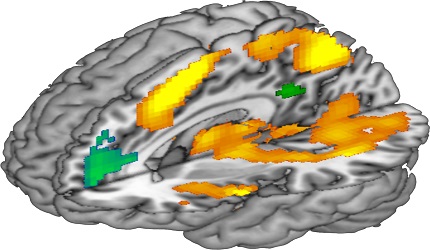
A recent study published in Neuron entitled “Specific hypothalamic neurons required for sensing conspecific male cues relevant to inter-male aggression” describes a novel neural circuit for detecting male pheromone cues pertaining to inter-male aggression. This work was performed by researchers in Dr. XU Xiao-Hong’s Lab. These results provide crucial insights into the neural circuit mechanism underlying sex specific olfactory information processing and regulation of sexually dimorphic social behaviors.

A recent study published in Neuron describes in greater detail than ever before the anatomical embodiment of color sensations in the cerebral cortex, linking brain structure to perceptual function. This discovery was the fruit of cooperative work between researchers in Dr. WANG Wei’s lab.
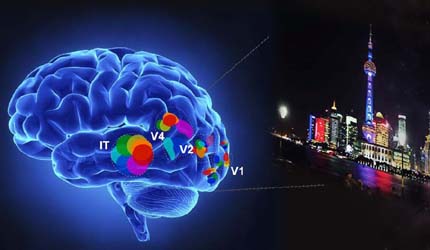
The blood vasculature in the brain is a highly ramified, complex but well-organized vessel network. During development, the pathfinding of growing vessels is critical for the patterning of the brain vasculature. However, its underlying mechanism still remains elusive. A recent study published online in Neuron uncovers that Ca2+ activities mediated by mechanosensitive Piezo1 channels regulate the pathfinding of growing brain vessels in larval zebrafish. This work was performed by Dr. DU Jiulin’s research group.
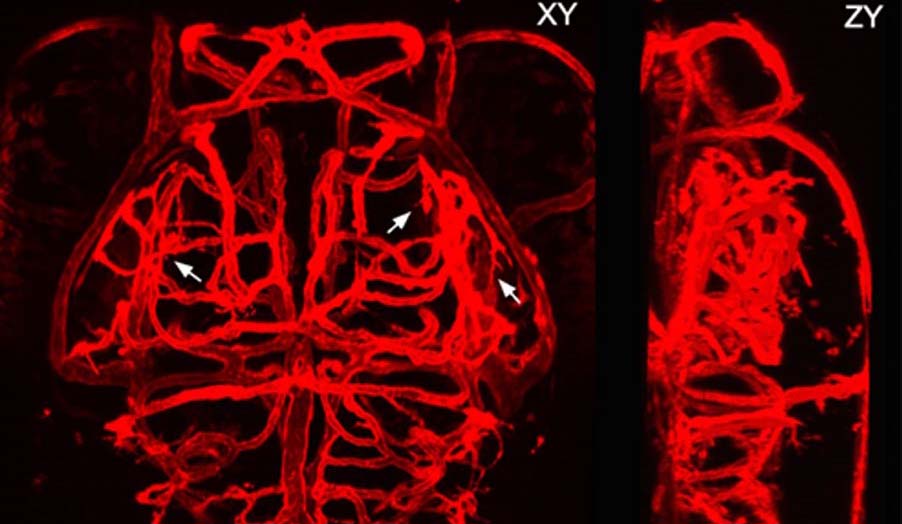
A recent study published in Proceedings of the National Academy of Sciences discovered that co-activation of a large number of cortical neurons could cause a persistent global enhancement of cortical excitability. This work was performed by researchers in Dr. POO Muming’s Lab.They found that repetitive optogenetic co-activation of neuronal populations in the mouse cortex caused the enhancement of evoked firing of both local and distant cortical neurons. This enhancement required the co-activation of a sufficiently large population of neurons either within one cortical area or distributed in several areas.

A recent study published in Current Biology demonstrated that having infants in the family group could promote altruistic behavior of marmoset. This work was performed by researchers in Dr. GONG Neng’s team and Dr. Liang Zhifeng’s lab.Such infant-induced modification of neural activity offers a window for examining the neural basis of altruistic behaviors in marmoset monkeys.
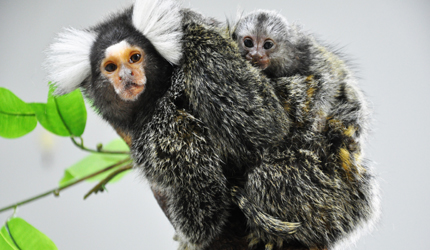
A recent study published in Nature Biotechnology reported a novel volumetric imaging method: confocal light field microscopy to image fast neural and vascular dynamics at high speed and deep in the brain. This work was performed by researchers in Dr. WANG Kai’s Lab and Dr. DU Jiulin’s lab.

A recent study published in Cell Research reported the first monkey model for mitochondrial replacement by first polar body transfer. The study was conducted by a team led by SUN Qiang and LIU Zhen. This work is the first to demonstrate the effectiveness and safety of polar body replacement at the individual primate level, and has important reference significance for the treatment of mitochondrial genetic diseases and infertility caused by low ovarian reserve.

A recent study published in Journal of Cell Biology systematically analyzed the lineage progression in zebrafish retina and provided a proof-of-concept method to get specific neuron types through lineage-dependent reprogramming. This work was conducted by researchers from Dr. HE Jie’s Lab.

A recent study published in Neuron reveals the long-range circuit underlying nociceptive information processing. This work was performed by researchers in Dr. SUN Yangang’s Lab. The results demonstrate that the ipsilateral spino-parabrachial pathway directly relay pain signals from the spinal cord to the ILN but not the amygdala, providing crucial insight into the cellular and circuitry mechanism underlying nociceptive information processing.

A recent study published in eLife reveals that the secondary motor cortex contributes to adaptive action selection during flexible visual categorization. This work was performed by researchers in Dr. YAO Haishan’s Lab. Dr. YAO’s lab demonstrates that M2 plays an important role in sensory-history-dependent adaptive choice behavior during flexible stimulus categorization.
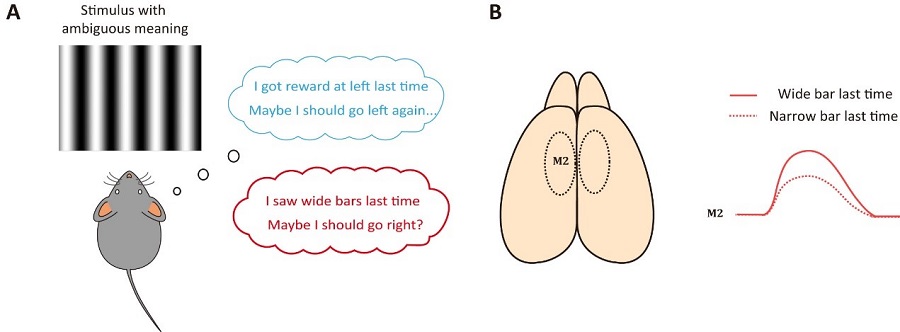
A recent study published in American Journal of Psychiatry reported a novel cross-species translational approach for diagnostic classification in human mental disorders. This work was performed by researchers in Dr. WANG Zheng’s Lab, in close collaboration with Dr. HE Ran’s group .

Two recent research articles revealed a considerable degree of plasticity of retinal function during the early stage of development. The research was completed by Dr. ZHANG Yifeng’s lab.The research results provide a basis for exploring how environmental stimuli change the retinal circuits, and help to explore the use of early sensory experience training for adjuvant treatment of some sensory system diseases.
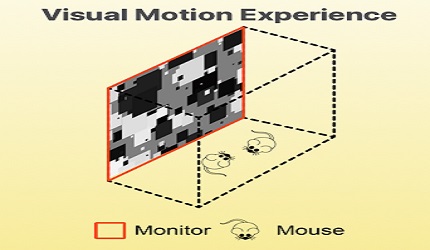
A recent study published in eLife reveals the different neural mechanisms underlying opioid analgesia. This study was performed by researchers in Dr. SUN Yan-Gang’s Lab.Using a combination of genetic, pharmacological, and behavioral approaches, the authors reveal that analgesic effects of exogenous and endogenous opioids on inflammatory pain are mediated by mu opioid receptors (MORs) expressed in glutamatergic and GABAergic neurons, respectively.
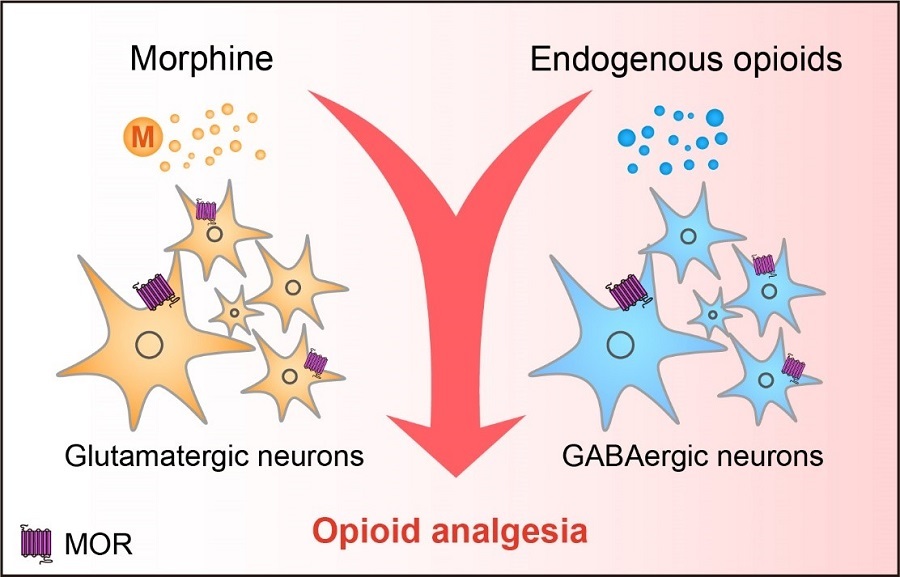
A recent study published in Nature Communications reveals that the top-down projection from orbitofrontal cortex to primary visual cortex contributes to visual associative learning. This work was performed by researchers in Dr. YAO Haishan’s Lab. They demonstrates that the OFC projection to V1 plays a key role in filtering out non-relevant visual information to facilitate associative learning.

A recent study published in Cell Reports demonstrates that retinoid X receptor α (Rxra) regulates docosahexaenoic acid (DHA)-dependent spinogenesis and functional synapse formation in vivo. This work was performed by researchers in Dr. YU Xiang’s Laboratory.
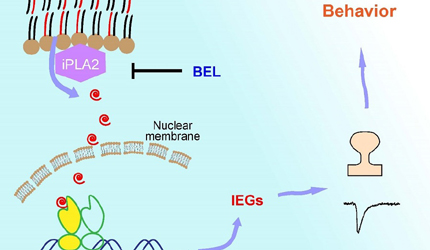
On May 18th, a research article named ”A rationally engineered cytosine base editor retains high on-target activity while reducing both DNA and RNA off-target effects” was published in Nature Methods, which was cooperatively accomplished by YANG Hui’s group, Li Yixue’s group and Zuo Erwei’s group.
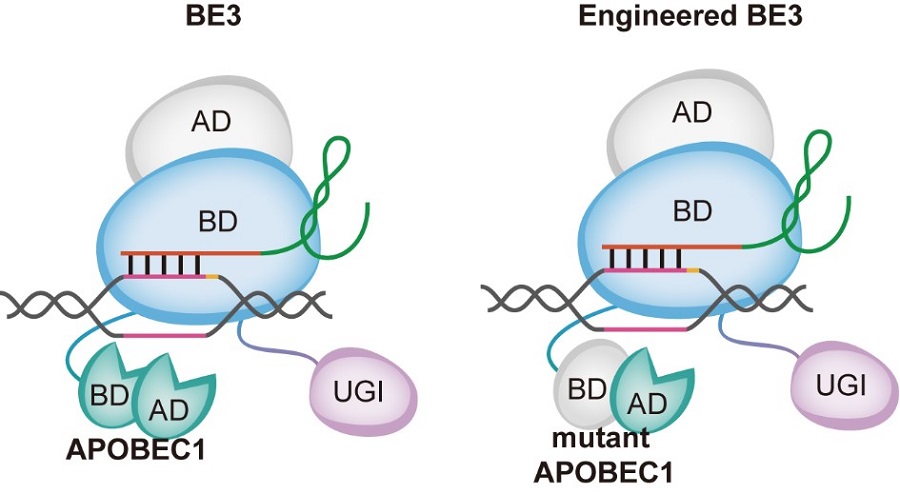
A recent study published in Nature Communications demonstrated that spider venom-derived peptide HpTx1 induces hyperalgesia in Nav1.7 knockout mice. This finding is from a joint work by Prof. LIU Zhonghua’s team and Dr. LIU Jing Yu’s lab.
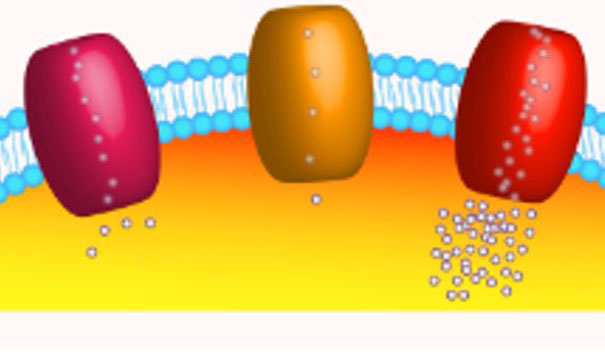
A recent study published in Cell reports demonstrates that cortical inputs from posterior amygdala (PA) onto the ventrolateral part of ventromedial hypothalamus (VMHvl) bidirectionally modulate male aggression behavior in mice. This work was performed by researchers in Dr. XU Xiao-Hong’s Lab.
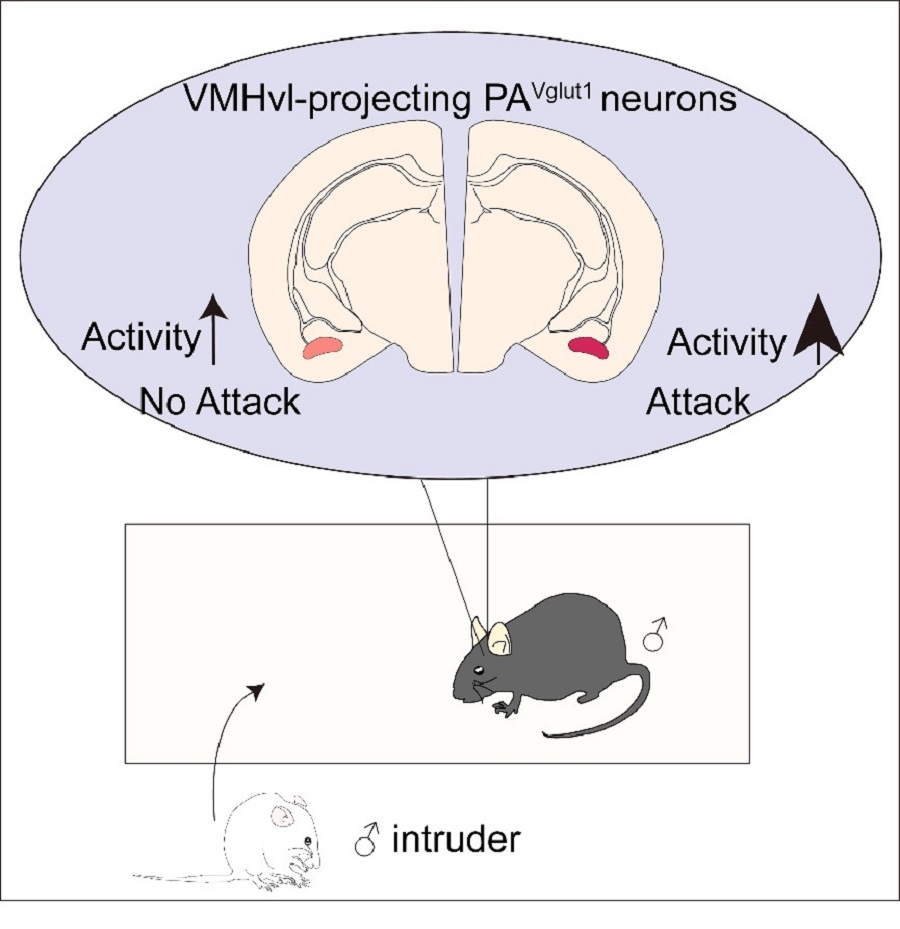
A recent study published in Science Advances reports a highly sensitive and selective potassium ion (K+) nanosensor that can be excited by near-infrared (NIR) light. This work was performed by researchers in Dr. DU Jiulin’s, Dr. XIONG Zhiqi’s Labs and Dr. BU Wenbo’s Labs.
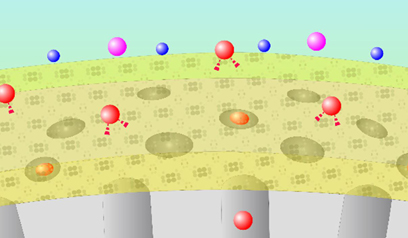
Recently, collaboration between Dr. DUAN Xiaojie’s group and Dr. LIANG Zhifeng’s group , has led to a novel MRI compatible, graphene fiber DBS electrode. Using a Parkinsonian rat model, this novel electrode achieved full activation pattern mapping by simultaneous deep brain stimulation and fMRI, and revealed close relationship between fMRI activation and DBS therapeutic improvement.
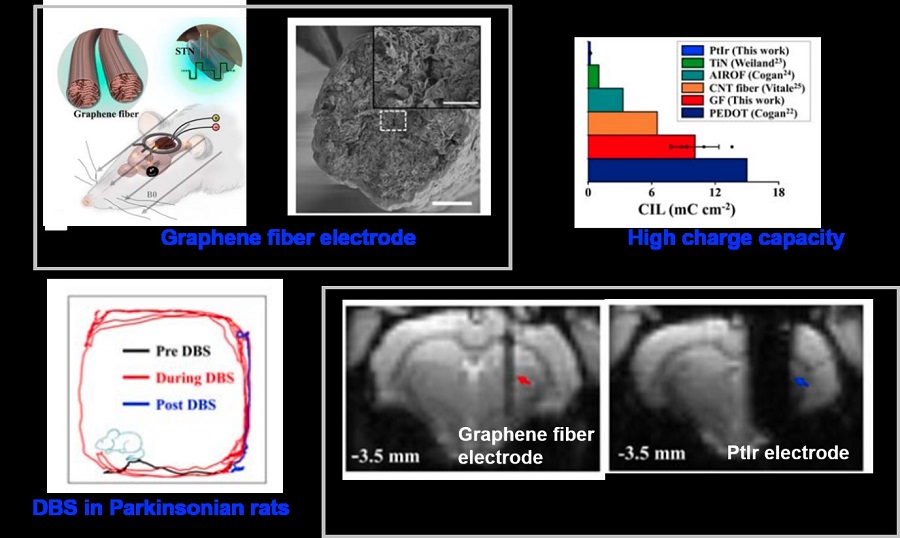
A recent study published in Journal of the American Chemical Society reports a near-infrared (NIR) voltage nanosensor that enables real-time imaging of neuronal activities in mice and zebrafish. This work was performed by researchers at Dr. DU Jiulin’s Lab.

A recent study published in Cell revealed that glia-to-neuron conversion alleviates symptoms of two top-ranked neurological diseases in mice. This work was performed by researchers in Dr. YANG Hui's Lab. This study provides a new approach for treating a variety of disorders due to neuronal loss.

A recent study analyzed the genomic, behavioral, multi-channel EEG and functional MRI data of transgenic macaque monkeys, and found that MECP2 gene overexpression caused a chain of functional changes in GABA signaling pathway, β band neural synchronization, functional connectivity networks and cognitive behaviors. This work was performed by researchers in Dr. WANG Zheng’s lab.

A recent study published in PLOS Biology revealed that light-dark cycle is essential for the initiation of the cellular clock in zebrafish by constructing a transgenic zebrafish line to report in vivo circadian rhythm at the single-cell level. This work was performed by researchers in Dr. YAN Jun’s Lab and Dr. HE Jie’s lab, with Dr. LI Yuanhai .
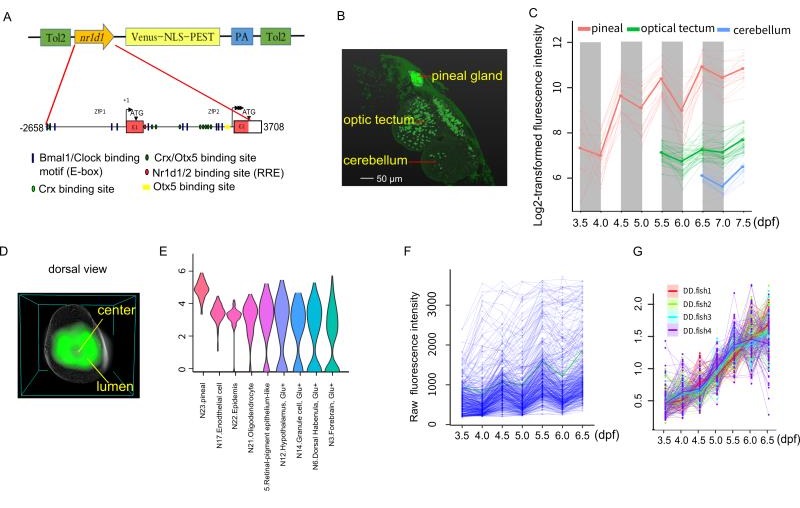
A recent study published in Neuron provided new evidence about the neural mechanisms of active information maintenance in working memory. The work was performed by the researchers in Dr. LI Chengyu’s Lab. This work strongly supported the critical role of transient coding scheme, but not persistent coding scheme, in WM information maintenance under the current experimental conditions.

A recent study published in Nature reported two conserved epigenetic regulators as novel anti-aging targets. This work was performed by researchers in Dr. CAI Shiqing's Lab and Dr. JIANG Lubing’s team. The work has unraveled conserved negative regulators of healthy aging by using multiple modalities and systems, providing insights into how to achieve healthy aging.
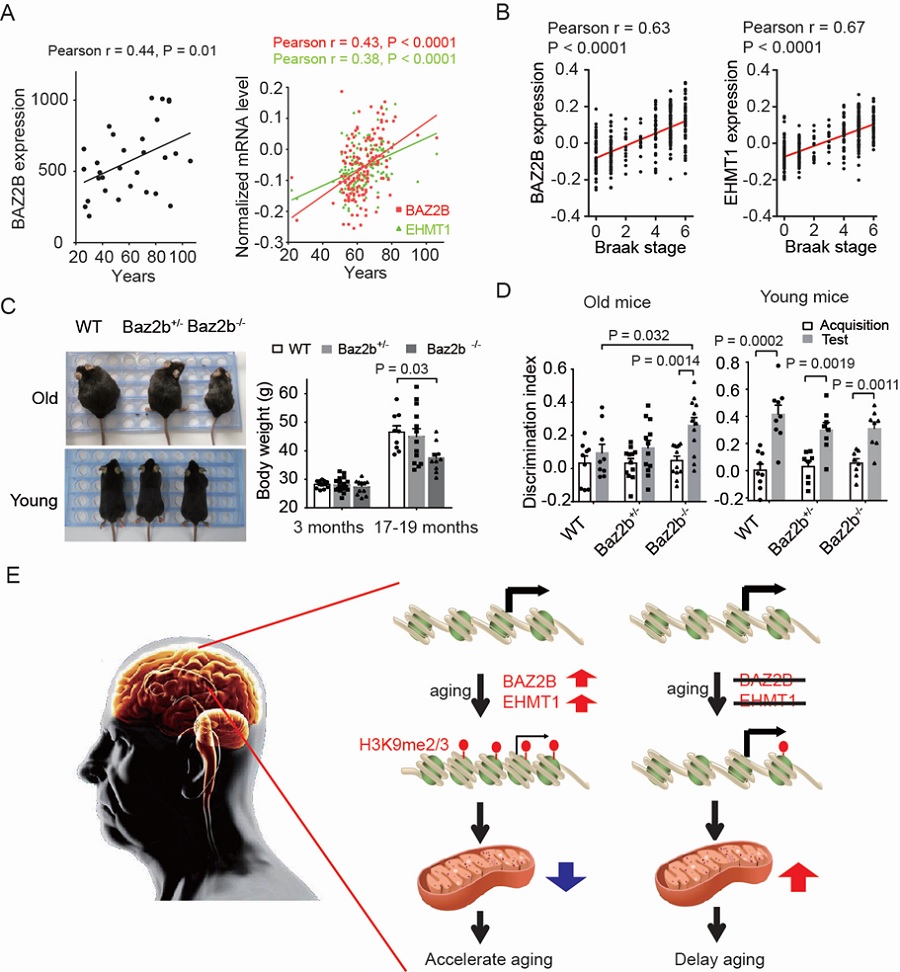
A recent study published in Nature Neuroscience revealed the spatiotemporal gene expression pattern in mammalian circadian pacemaker, Suprachiasmatic Nucleus (SCN), at single-cell resolution. This work was performed by researchers in Dr. YAN Jun’s Lab. The understanding of neuronal mechanism of circadian rhythm in nervous system is important for the human health.

A recent study published on eLife, focusing on deep and bulk transcriptomic analysis of spiral ganglion neurons (SGNs) in mouse inner ear, is performed by researchers in Dr. LIU Zhiyong’s Lab. Therefore, how to maintain functions of SGN and regenerate them after the damage is one important but tough question in the hearing field.
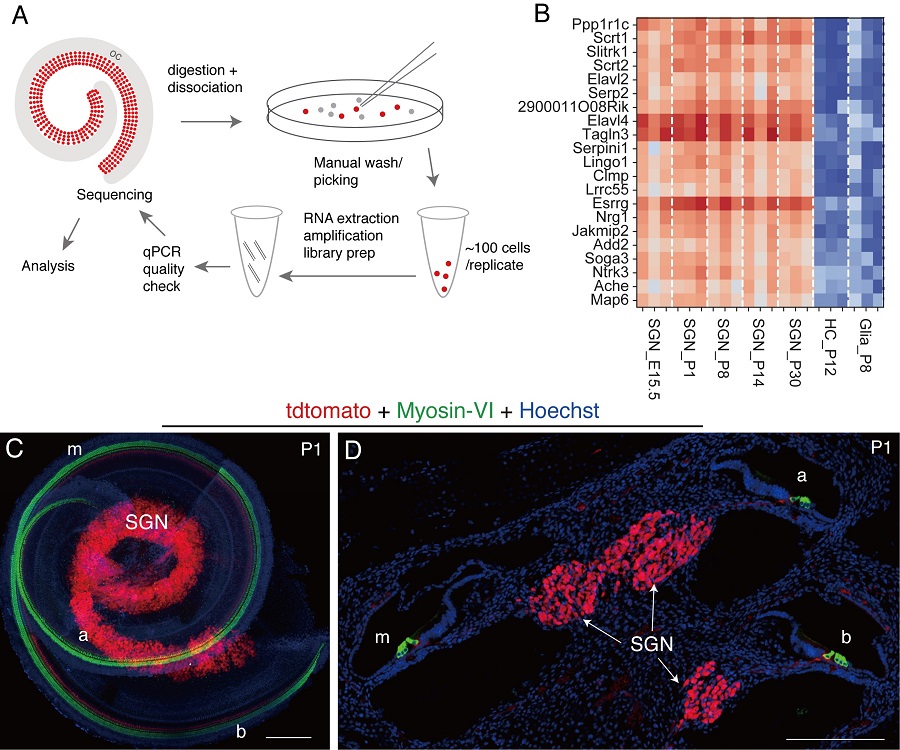
A recent study published in Journal of Neuroscience reveals a new pro- inflammatory factor pancreatitis-associated protein-I (PAP-I) in maintaining neuropathic pain. This work was performed by researchers in Dr. ZHANG Xu’s Lab and in Dr. BAO Lan’s Lab.
